Beginner’s Guide: University Accreditations in the US
What’s a university accreditation? Is my university accredited? How do accreditations work online?
At Class Central, we often get questions about accreditations in online education:
- What are accreditations?
- Which type of accreditation is better?
- Are online courses or degrees accredited?
So in this article, let’s try to make sense of higher education accreditations in the US, and in particular, of how they apply to online education. Here’s what we’re going to cover:
- What’s an Accreditation
- Institutional vs Programmatic Accreditations
- Accrediting Organizations
- Regional vs National Accreditations
- Choosing an Accreditation
- Accreditations in Online Education
- Red Flags to Look For
- How to Easily Verify an Accreditation
What’s an Accreditation?
Simply put, an accreditation is a seal of approval obtained through an external quality audit.
In the context of higher education in the US, the accreditation process involves evaluating an academic institution or program against a specific set of criteria. For example, to gain or maintain accreditation, an institution should employ instructors with appropriate qualifications and offer sufficient support to its students.
Proper accreditation can facilitate recognition of your degree, access to financial aid, and even entry to some professions.
So before enrolling in a higher education program — be it online or on campus — you’ll want to make sure that the institution and program are properly accredited.
Institutional vs Programmatic Accreditations
Accreditations can be broken down into two types, according to their scope:
- Institutional accreditations: These cover entire institutions. For instance, Harvard University is institutionally accredited by the New England Commission of Higher Education (NECHE).
- Programmatic accreditations: These cover specific programs. For instance, Harvard’s medical degrees are programmatically accredited by the Liaison Committee on Medical Education (LCME).
Importance for Licensure
While an institutional accreditation is almost always a must, a programmatic accreditation isn’t always needed. However, when it matters, it really matters. In many states, a programmatically accredited degree may be required to access certain regulated professions.
For instance, in most US jurisdictions, only graduates from law schools accredited by the American Bar Association can sit the bar exam.
Accreditation Organizations
In the US, the accreditation of higher education institutions isn’t performed by the government itself but by private organizations, such as NECHE and LCME.
Instead, the government accredits the accreditors: the US Department of Education (USDE) maintains a list of vetted accreditors, to help students distinguish trustworthy accreditors from bogus ones.
In addition, the Council for Higher Education Accreditation (CHEA), a US non-profit association of higher education institutions, also maintains a list of recognized accreditors.
These two sources, USDE and CHEA, which are typically in agreement, provide the ground truth as to what may be considered a legitimate accrediting organization, and therefore, a legitimate institutional or programmatic accreditation.
So before joining an institution or program that claims to be accredited, you should make sure that the accreditor is itself recognized by USDE, CHEA, or both. Conveniently, the CHEA website also mentions if an accreditor is recognized by USDE. For example:
- NECHE is recognized by both USDE and CHEA.
- LCME is recognized only by USDE.
Regional vs National Accreditors
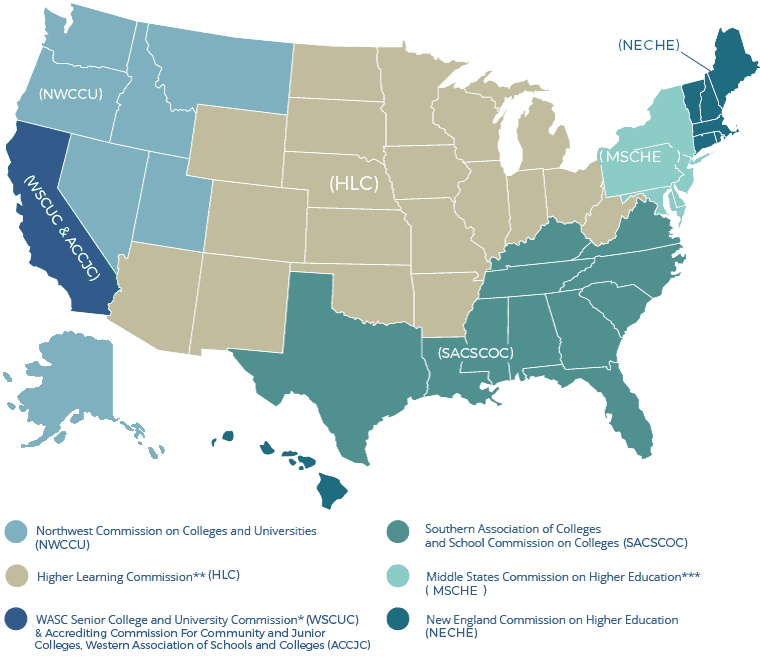
Historically, there were two types of recognized accreditors: regional and national accreditors. As their name implies, one of the differences between both is the scale at which they would operate:
- Regional accreditors would operate in specific US regions. For example, NECHE is a regional accreditor serving only a handful of northeastern US states.
- National accreditors would operate in the entire US territory. For example, LCME is a national accreditor serving all US states.
But in 2020, in a controversial move, the US Department of Education (USDE) stopped distinguishing between both types of accreditors, preferring instead to maintain a unique list. As far as USDE is concerned, there wouldn’t be “regional” accreditors and “national” accreditors anymore; there would simply be “accreditors.”
This change paved the way for regional accreditors to start accrediting institutions outside their regions. For instance, in 2022, some institutions based in New York sought accreditation from NECHE, even though New York lies outside the accreditor’s historical region.
(Note that even before this change, regional accreditors could accredit institutions outside the US. For example, two UK universities are regionally accredited in the US, including the Open University (OU). I graduated with a bachelor’s degree from the OU and later joined a US master’s degree. The OU being regionally accredited in the US made the acceptance process a breeze.)
But the most significant difference between regional and national accreditors wasn’t the scale at which the accreditors operated, but rather, the breadth and depth of their respective accreditation processes:
| Regional Accreditors | National Accreditors | |
| First Appeared |
|
|
| Accreditations Offered |
|
|
| Institutions Are Usually |
|
|
| Accreditation Process |
|
|
Based on their name alone, we could assume that a national accreditation would be better than a regional accreditation. But as you can see above, in reality, the opposite is true.
Simply put, regional accreditations offer students more assurances: they are significantly more thorough, and thereby, more trustworthy signals of the quality of an institution.
For this reason, even though USDE has stopped distinguishing between regional and national accreditors, we will continue to distinguish them in the rest of this article — just like CHEA continues to distinguish them.

Likewise, when they’re regionally accredited, universities tend to say as much on their accreditation page. For instance, as you can see above, Harvard is explicit about it.
Advantages of Regional Accreditations
Because they’re older and more comprehensive, regional accreditations are considered the gold standard of US accreditations and the option of choice for most institutions, including the more prestigious ones. For instance, all Ivy League schools are regionally accredited.
But there are also very practical reasons to prefer regional accreditations:
- Degree Recognition: Degrees from regionally accredited institutions are more widely recognized by employers and other academic institutions.
- Academic Focus: Regional accreditations are more academic in nature, and thereby, often denote higher academic standards.
- Credit Transfer: Academic credit earned at a regionally accredited institution is more likely to be accepted by other institutions.
- Nonprofit: Regionally accredited institutions are usually nonprofits, less money-driven and more concerned with student outcomes.
Advantages of National Accreditations
In some cases, national accreditations may offer a few advantages:
- Affordability: National accreditations are typically cheaper to obtain and maintain, which occasionally results in lower tuition fees.
- Career Focus: National accreditations tend to be more career-oriented and may carry special significance in certain professional fields.
Choosing an Accreditation
Given the considerable advantages of regional accreditations, when choosing a degree program, we recommend always going with a regionally accredited institution.
The career-focus and potential affordability of nationally accredited institutions can seem attractive. But if cost is the issue, know that community colleges are usually regionally accredited, and may offer affordable, four-year degrees. So these are likely a better option.
Finally, in many states, a programmatic accreditation is needed to access some professions.
Accreditations for Online Degree Programs
Fortunately, accreditations work the same way online as they do on campus. If an institution is accredited, be it regionally or nationally, that accreditation extends to its online programs. And programmatic accreditations can be delivered for both online and on-campus programs.
Note that this only applies to formal academic programs — that is, programs that offer degrees and academic credit. For instance, the online degree offered by Georgia Tech is accredited, but Georgia Tech’s online courses on edX and Coursera are not.
If you’d like to discover more accredited online degrees, head to our article: 70+ Legit Online Master’s Degrees.
Beyond Accreditations
Proper accreditation is a good indicator but not an absolute guarantee of quality. Indeed, accreditations have their limits:
- They capture the global features but not the finer details of a program or institution.
- They involve periodic reviews, so a program’s quality may drop between audits.
- They partly rely on institutions providing truthful information, but some may be dishonest.
So after checking accreditations, you should continue your research by looking for red flags.
Red Flags
Indicators that an institution may not be worth its salt include:
- Risk of Accreditation Loss: A program or institution may be on the verge of losing its accreditation, which should be reflected on the accreditor’s webpage.
- Uneven Student Support: Institutions should provide comparable levels of support to their online and on-campus students.
- Aggressive Marketing: Some institutions spend more on marketing than they do on ensuring the quality of their offerings.
- Unbalanced Faculty: If an institution offers the same program online and on campus, instructors in both programs should be equally qualified.
- Too Easy, Too Short: Programs that are too easy or too short are unlikely to prepare you well for a job or further studies.
- Different Diplomas: If an institution offers the same program online and on campus, both should lead to the exact same credential.
- Poor Reputation: Whether deserved or not, institutions that suffer from a poor reputation are less likely to carry weight with employers.
- Lack of Campus: Most successful online programs are offered by well-established institutions with long-standing, traditional campuses.
- Low Outcomes: Institutions must publish statistics on their programs’ performance and students’ achievements. Look for high retention and employment rates.
But you should also look for positive features. For instance, the best online degree programs are deeply integrated into the fabric of their institutions. In a previous article, I went over some characteristics to look for when choosing an online degree program.
Verifying Accreditations
Here are the steps you should take to verify if an institution or program is properly accredited.
1. Verify Regional Accreditation
To verify if an institution is regionally accredited, search the institution in the the USDE database or CHEA database. If you find the institution listed in the results, then you’ll know that it’s accredited.
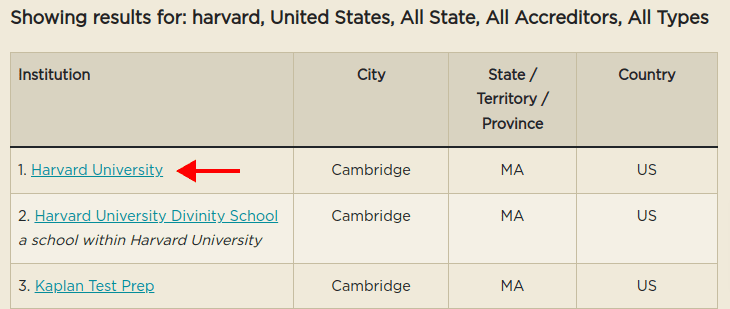
If you then click on the institution name, you’ll be able to see by which accreditor accredited the institution.
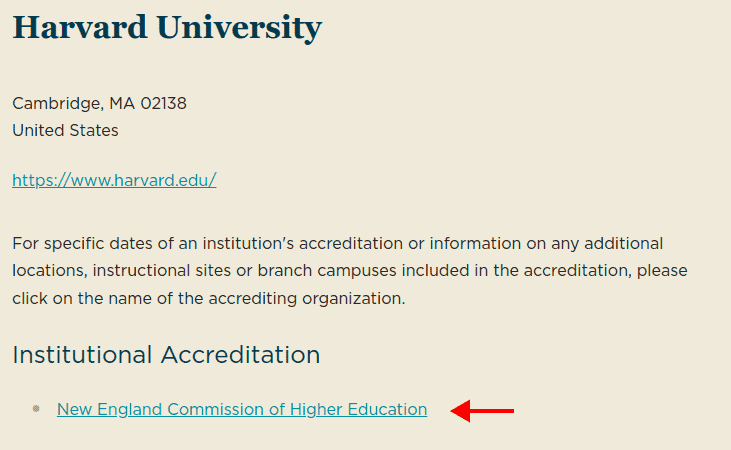
Finally, if you click on the accreditor name, you’ll be able to see if it’s a regional accreditor.
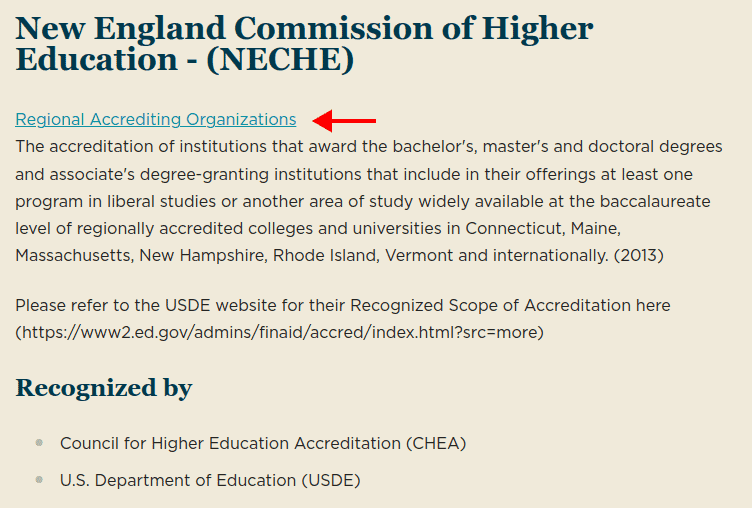
Likewise, if you searched for “Princeton”, you would find that it’s institutionally accredited by the Middle States Commission on Higher Education (MSCHE), and that MSCHE is a regional accreditor. Therefore, Princeton is regionally accredited.
2. Verify Programmatic Accreditation (If Required)
To enter a regulated profession, you should research the profession’s licensure requirements in your state. These may include completing a program accredited by a specific organization.
For instance, in some states, to become a licensed professional engineer, you must first graduate from a program accredited by ABET.
3. Look for Red Flags
Finally, you should research the program or institution you’re interested in to see if any of the red flags described earlier in the article come up.

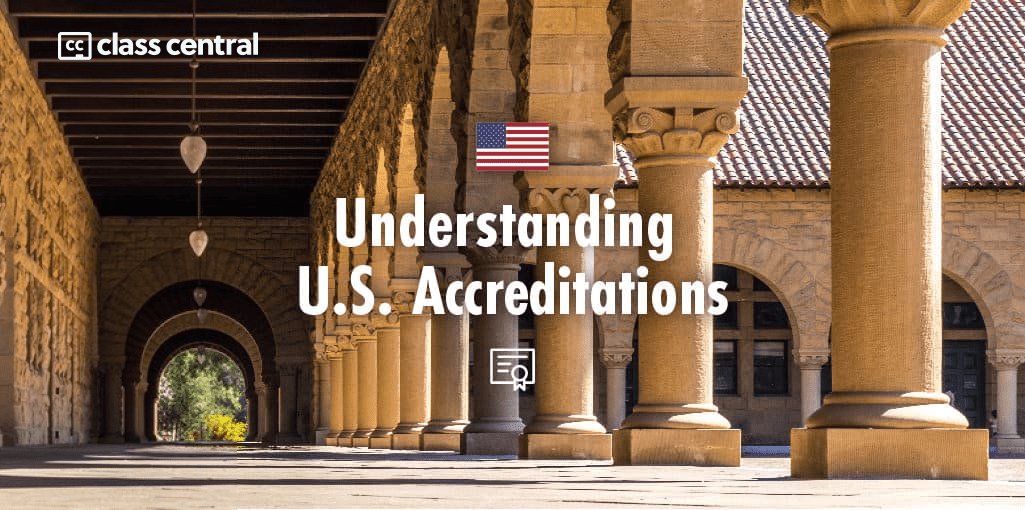






Chris Davis
The idea that regional is non-profit and national is for-profit is a misnomer. Historically, trade schools that are nationally accredited have tended be privately owned. Most of the major for-profit universities are regionally accredited. The idea that one accreditor type favors one type of institution is an artifact of historical factors and not by design or intention. I think this is misleading in the article.
Missing from the discussion is that degrees from a nationally accredited school may not be used to gain entry to a regionally accredited graduate school. This depends on the admitting school, and the same is true for transfer credits. In fact, this is why accreditation gain traction in the early 20th century among academic institutions. The need to was to determine what graduates should be considered for graduate school.
In the context of “danger of losing accreditation,” the key words to look for are “on notice,” “probation,” or “show cause.” These each mean different things, but all of them indicate the school’s accreditation is at risk. Schools can do and do recover from each status, but those are the words to look for.
Lack of a campus is a two-edged sword. Many colleges with a campus are new to online learning and provide uneven support to online students. This is difficult to assess before enrolling. Fully-online colleges focus on online students and are more likely to be online student friendly.
The steps for verifying accreditation are overly complicated. All you need to do is search CHEA’s institutional database. That includes all institutions that have been accredited by a CHEA accepted accreditor. While some accreditors do not do CHEA, that number is small. There is no need to validate the accreditor if it is in CHEA.
For program accreditation, verify what accreditation is required, and the article is correct, this varies by state. Most accreditors have a list of accredited programs, but you can also look at the institutional web site and find their list of accreditations. I would always validate that the accreditation is current on the program accreditor web site. There have been cases of schools misrepresenting their program accreditation status.
Also, on the topic of program accreditation, for some professions the state is the program accreditor effectively. Nursing, for example, has program accreditors, but most states license nursing programs and the accreditation maybe optional.
State licensing and approval is absent from the article, and while not as important as accreditation, it plays an important role in this discussion.
Finally, the article fails to mention that accreditation covers degree granting programs and schools. An organization or a company can offer online courses (MOOCs or otherwise) without being accredited. Technically, though, they should be licensed by any states where they operate.
Manoel Cortes Mendez
Thanks. I’ve included some of these details in the update.
Glenn
Thank you, Chris, for your outstanding clarifying comments.
But I would have been happier if you had directed readers to the US Dept of Education website for verifying accreditation stats.
https://ope.ed.gov/dapip/#/home
CHEA is, and has always been, an accreditation wannabe. Rather, it is US ED Secretary’s recognition of a higher ed membership association that matters in regard to Title IV.
CHEA just pretends; OPE US ED is the real thing.
Consider the fact that, long after the US Department of Education de-recognized ACICS, CHEA was still showing ACICS as a member in good standing, when in fact ACICS was an accreditation-mill.
If anyone watched SACS re-recognition session at NACIQI last summer, they would realize how utterly lax accreditation is at the federal level. All these layers of bureaucratic organizations exist in order to buffer the schools from oversight and protect their access to the flowing spigot of federal funds ($1.7 trillion in student loan debt so far).
Pakistan has it worse, apparently. Here’s an accreditation scam on top of a diploma mill. Unbelievable.
https://darknetdiaries.com/transcript/142/
https://tribune.com.pk/story/1611033/Axact-scam-embarrassed-the-country-globally:-CJP
Pat Bowden
Thank you for pointing this out, Glenn. I’ve added the USDE link to the article.